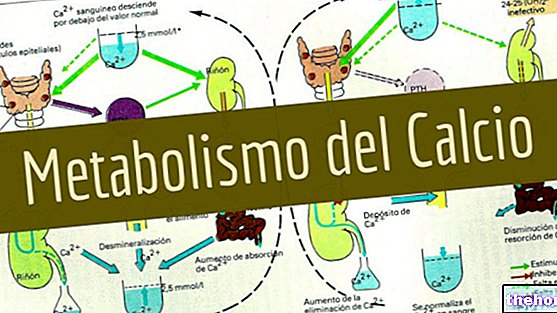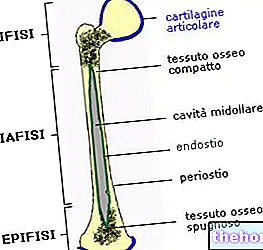The parathyroid glands are four small glands located, two by two, on the dorsal aspect of the thyroid; shape and size resemble those of a lentil. Their main function is to control the level of calcium in the blood.
The parathyroid cells are made up of two types of cells, the oxyphilic ones, which begin to appear around puberty, and the main ones, responsible for the synthesis and release of parathyroid hormone (PTH).

Under normal conditions, calcium is maintained within a narrow range of values, ranging from 8.5 - 10.5 mg per deciliter of blood. Both its lowering (hypocalcemia) and its excessive rise (hypercalcemia) cause serious functional alterations to the striated and smooth muscles.
- Effects of hypocalcemia: tetany, cardiac hyperexcitability, bronchial, bladder, intestinal and vascular spasms.
- Effects of hypercalcemia: reduction of muscular and nervous excitability, nausea, vomiting, constipation.
The concentration of calcium in the blood is controlled not only by the parathyroid hormone secreted by the parathyroid glands, but also by calcitriol (which increases the absorption of calcium in the intestine) and by calcitonin (which, in contrast to the action of the parathyroid hormone, decreases calcemia) .
Pathological changes of the parathyroid glands
The hyperactivity of the parathyroid glands (hyperparathyroidism) leads to a pathological increase in the synthesis of parathyroid hormone, with a consequent rise in calcium levels, all at the expense of the bones, which represent the largest calcium reserve in the body. In fact, to increase calcemia, parathyroid hormone accelerates bone resorption by osteoclasts, weakening their mineral structure. As a result, the skeleton appears more fragile and susceptible to spontaneous fractures and deformations.The kidneys are also damaged, since the increased urinary excretion of calcium and phosphate favors the appearance of kidney stones.
Hyperparathyroidism is usually caused by a benign tumor of a parathyroid, which is treated with the surgical removal of the "mad" gland.
When the activity of the parathyroid glands is so reduced that it borders on the pathological, we speak of hypoparathyroidism. This condition is accompanied by a lowering of calcemia, which in acute form can cause nervous disorders and tetanic crises (painful spasms of the muscles), while in that chronic determines the deposition of calcium in various organs, especially at the nervous and ocular level (cataract) .Therapy consists in the administration of calcium and active vitamin D (calcitriol).
The most frequent form of hypoparathyroidism is post-surgical, caused by operations in the neck region, in particular the thyroid gland, which have accidentally removed or in some way damaged the parathyroid glands.
Parathyroid - Video: Anatomy, Functions, Parathyroid Hormone
Problems with playing the video? Reload the video from youtube.
- Go to the Video Page
- Go to Wellness Destination
- Watch the video on youtube
















.jpg)











